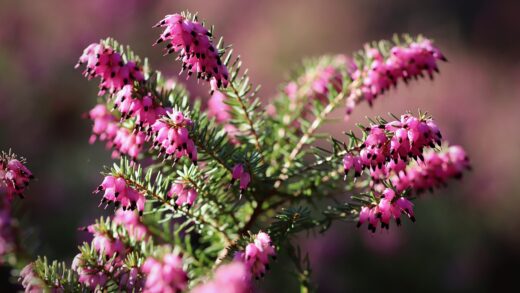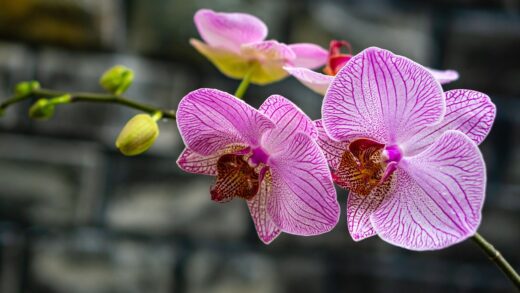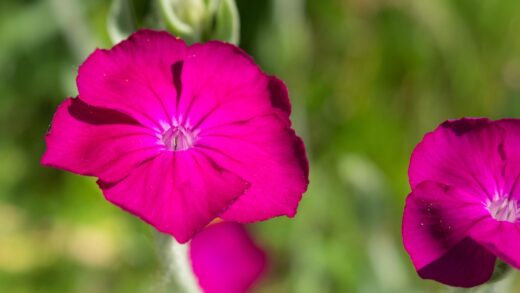Ensuring the fernleaf peony successfully overwinters and returns with vigor in the spring depends on a combination of its natural hardiness and proper autumn preparation. This species is inherently very cold-tolerant, capable of surviving in frigid climates when its basic needs are met. The primary goal of winter care is not to keep the plant warm, but to protect it from fluctuating temperatures and excess moisture, which can be more damaging than the cold itself. Proper end-of-season cleanup and, in some cases, a protective layer of mulch are the key components of a successful wintering strategy.
The fernleaf peony is a hardy perennial, typically thriving in USDA hardiness zones 3 through 8. This means it can withstand minimum winter temperatures ranging from -40 to -34 degrees Celsius (-40 to -30 degrees Fahrenheit) at the cold end of its range. The plant’s survival mechanism is its fleshy, tuberous root system, which stores all the energy it needs to endure the winter and fuel the initial burst of growth in the spring. To enter this dormant state successfully, the plant requires a period of chilling, making cold winters a necessary part of its life cycle.
As autumn progresses and temperatures drop, the plant’s foliage will naturally yellow, wilt, and die back completely. This is a crucial part of its preparation for dormancy, as it withdraws all usable energy from the leaves and stems and stores it in the roots. It is important to allow this process to happen naturally and not to cut the foliage back prematurely while it is still green. The complete senescence of the foliage is your signal that the plant is fully dormant and ready for its winter rest.
Once the foliage has completely withered, typically after the first couple of hard frosts, it is time for the most critical step in winter preparation: sanitation. You must cut all the old stems and leaves right down to the ground level. Meticulously remove all of this plant debris from the garden bed. This step is not just for tidiness; it is the single most effective way to prevent fungal diseases like botrytis blight, as the spores of these diseases overwinter on the dead plant material.
The role of mulch in winter protection
The decision to apply a winter mulch depends largely on your climate and the age of your plant. For mature, well-established fernleaf peonies in areas with reliable and consistent snow cover, winter mulching is often unnecessary. Snow is an excellent natural insulator, providing a protective blanket that keeps the soil temperature stable and shields the plant’s crown from harsh, drying winds and extreme cold. In these ideal conditions, the plant is perfectly capable of surviving the winter without any additional help.
However, in colder climates that lack consistent snow cover (e.g., zones 3-5), or in any zone where freeze-thaw cycles are common, a layer of winter mulch is highly recommended. The primary purpose of this mulch is not to keep the ground warm, but to keep it frozen. Fluctuating temperatures can cause the ground to heave, which can damage the shallow roots and even push the crown of the peony up out of the soil, exposing it to lethal cold and dehydration. A layer of mulch helps to moderate the soil temperature and prevent this damaging cycle.
The best time to apply winter mulch is in the late autumn or early winter, after the ground has already frozen. Applying it too early, while the ground is still warm, can trap heat and moisture around the crown, potentially leading to rot. It can also provide a cozy winter home for voles and other rodents that may be tempted to feed on the peony’s fleshy roots. Waiting for the ground to freeze solves both of these potential problems.
Good materials for a winter mulch are light and airy, such as straw, marsh hay, shredded leaves, or evergreen boughs. These materials insulate well without compacting and becoming waterlogged, which could suffocate the crown. Apply a loose layer about 10 to 15 centimeters deep over the top of the dormant plant. This protective layer will help ensure the ground stays frozen solid until the spring thaw begins in earnest.
Caring for young and newly planted peonies
Young fernleaf peonies, especially those in their first winter after being planted, benefit greatly from a protective layer of winter mulch, regardless of your climate zone. A newly planted peony has not yet had time to develop the extensive and deep root system of an established plant, making it more vulnerable to the stresses of winter. Frost heaving is a particular concern for new plants, as it can easily dislodge their shallowly planted crowns.
For a first-year plant, you should follow the same mulching procedure as you would in a harsh climate. Wait until after the ground has frozen solid, and then apply a generous, loose layer of an insulating material like straw or shredded leaves over the planting area. This will provide the extra protection needed to help the young plant make it through its first winter successfully and get a strong start the following spring.
It is equally important to remember to remove the winter mulch at the appropriate time in the spring. As the weather begins to warm and the snow melts, you should gradually pull the mulch away from the crown of the plant. If left in place for too long, the thick layer of mulch can delay the warming of the soil, slowing the plant’s emergence. It can also trap too much moisture around the emerging shoots, which can encourage rot and fungal diseases.
The goal is to remove the mulch just as the ground is beginning to thaw and before the new shoots start to push their way up. The fernleaf peony is one of the earliest perennials to emerge, so you need to be vigilant. Removing the mulch allows the sunlight to reach and warm the soil, signaling to the plant that it is time to begin its spectacular spring growth cycle.
Special considerations for container-grown peonies
Growing a fernleaf peony in a container presents a different set of winter challenges. The soil in a pot is exposed to the cold air on all sides, meaning it will freeze much faster, harder, and more completely than the soil in the ground. The roots of a container-grown plant do not have the vast, insulating thermal mass of the earth to protect them, making them far more susceptible to freezing damage. In most cold climates, simply leaving a potted fernleaf peony exposed on a patio or balcony will be a death sentence for the plant.
To successfully overwinter a potted fernleaf peony in a cold climate, you need to provide significant insulation for the container. One effective method is to move the pot into an unheated but attached garage, a shed, or a cold cellar for the winter. The location should remain cold enough for the plant to stay dormant (ideally below 4 degrees Celsius) but should not drop to the extreme sub-zero temperatures experienced outside. The soil should be kept just barely moist, watering perhaps only once a month to prevent it from becoming completely bone-dry.
Another option is the “pot-in-pot” method or burying the pot in the ground. You can sink the entire pot into a vacant spot in a garden bed up to its rim. The surrounding soil will then insulate the roots just as it would for an in-ground plant. After burying the pot, you can apply a layer of mulch over the top for additional protection, just as you would for a garden-planted specimen.
Alternatively, you can group several potted plants together in a sheltered location, such as against the foundation of the house, and surround the cluster of pots with a thick layer of insulating material. You can create a cage of chicken wire around the pots and fill it with shredded leaves or straw. This creates a microenvironment that helps to buffer the roots from the most extreme temperature swings throughout the winter months.
















